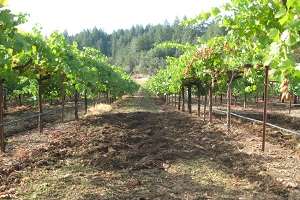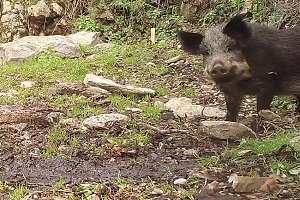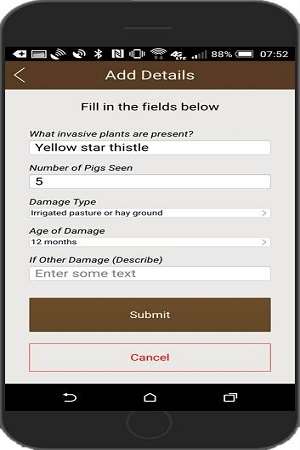Whether you call them wild hogs, feral pigs, feral hogs, wild boars, Russian boars or Eurasian boars, by any name the hairy beasts are wrecking crews on California lands. In rangelands, forests and farms, wild pigs trample crops, prey on farm animals and rip up soil with their sharp tusks, contributing to erosion.

To assess the extent of wild pig damage to rural property in California, UC Cooperative Extension scientists are conducting a survey of landowners, land managers and farmers statewide. They have created a GIS-based mobile app that works on Android and Apple devices to make it easy to participate in the study.

“Rangeland managers and farmers can enter data into the app from the field so that we can estimate the land area and economic impacts of feral pig damage over a longer time period,” said Roger Baldwin, UC Cooperative Extension wildlife specialist in the Department of Wildlife, Fish, and Conservation Biology at UC Davis.
Here's how it works. To file a report, users take photos of the wild pig damage, describe the damage and note the number of pigs seen. The app will map the acreage and geographic location. Cell service is not required at the site to collect data.
When the user is connected to wi-fi or cell service, the data and photos will be uploaded to the UC Agriculture and Natural Resources server so Baldwin and John Harper, UC Cooperative Extension livestock and natural resources advisor, can analyze the data. Users will be able to see a map of wild pig damage, but to maintain user privacy, private property and user identities are blocked from the general public.

"The goal of the app is to demarcate wild pig damage, ultimately allowing us to relate this data to habitat features present at damage sites to determine the impact that these habitat components have, both on how pigs use the landscape and where damage is most likely to occur,” Baldwin said.

Through the survey, the scientists will gain better insight into the amount of damage that wild pigs cause so they can offer advice to minimize losses.
“The app, especially from a rangeland standpoint, will provide a large data set that will help us calculate acreage damaged,” said Harper, who is based in Mendocino and Lake counties. “Once that is available, we have tools, presently used for fire loss, that will allow us to calculate economic loss of forage due to the pigs. The end user would benefit in knowing that loss and policymakers would benefit from knowing the aggregate economic loss from a managed game animal.”
Wild pig populations and their associated damage are so widespread throughout California that statewide eradication efforts may not be possible, according to Baldwin.
“We probably need to focus our limited resources on managing wild pigs in targeted areas that will provide the greatest benefit,” he said. “Information collected from this app will hopefully allow us to identify these areas, ultimately resulting in more effective and practical management of wild pigs in both agricultural and natural resource landscapes."
The wild pig damage app can be downloaded for free from the App Store and Google Play.
Although the study is currently focused on California, the app could be adapted to work at a regional, national or international scale. Citizen scientists can also use the app to report wild pig damage they see around the state.
To participate in the wild pig damage project without the app, landowners and ranchers can fill out a short survey at http://ucanr.edu/wildpig2016.
The survey takes about 15 minutes to complete. Individual identities and survey responses will be kept confidential and participation in the survey is entirely voluntary.
Source: ucanr.edu